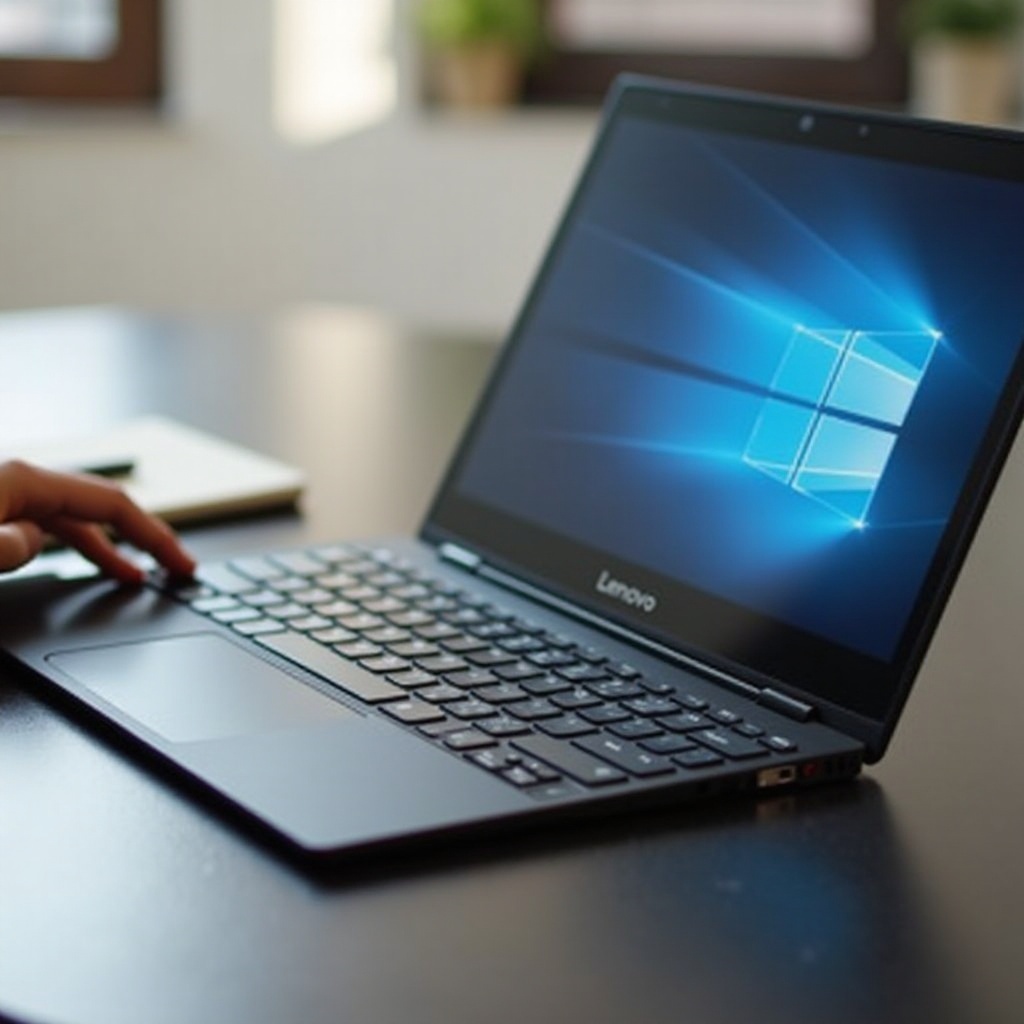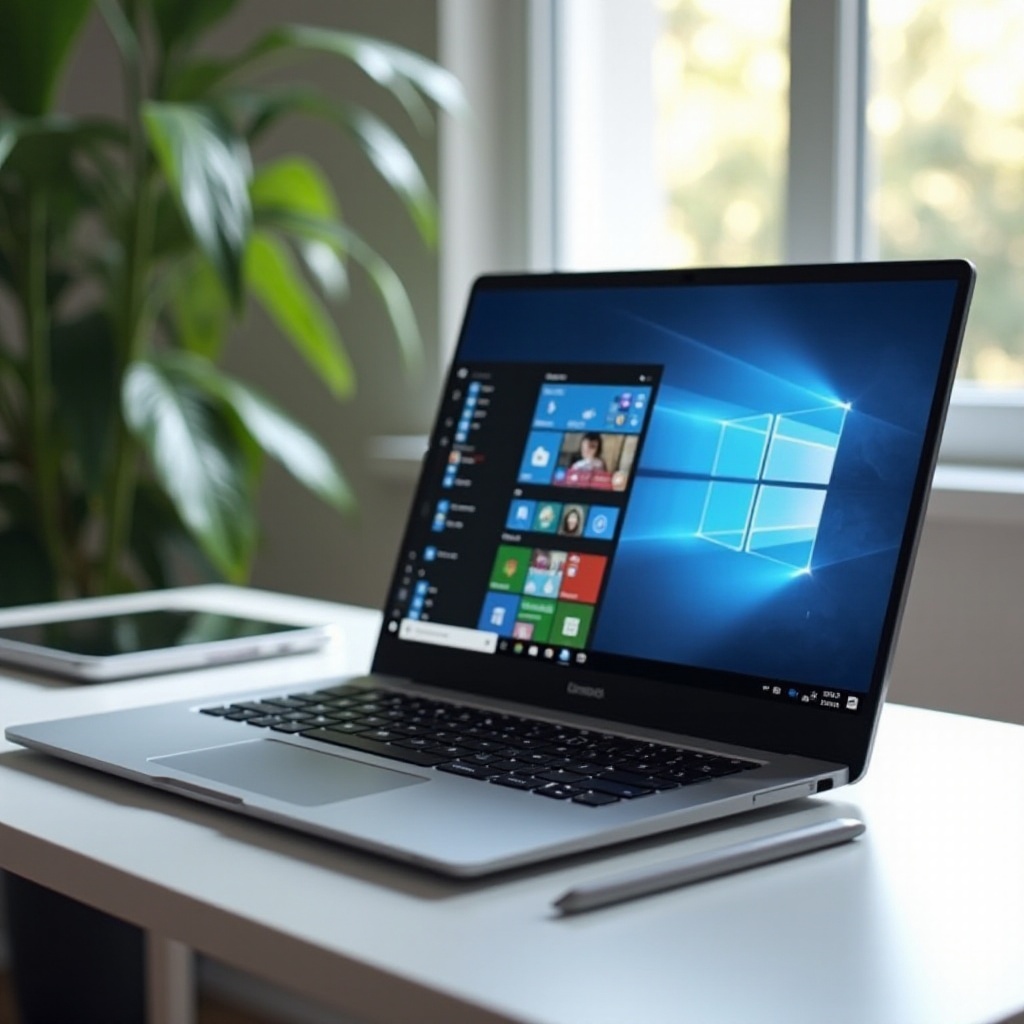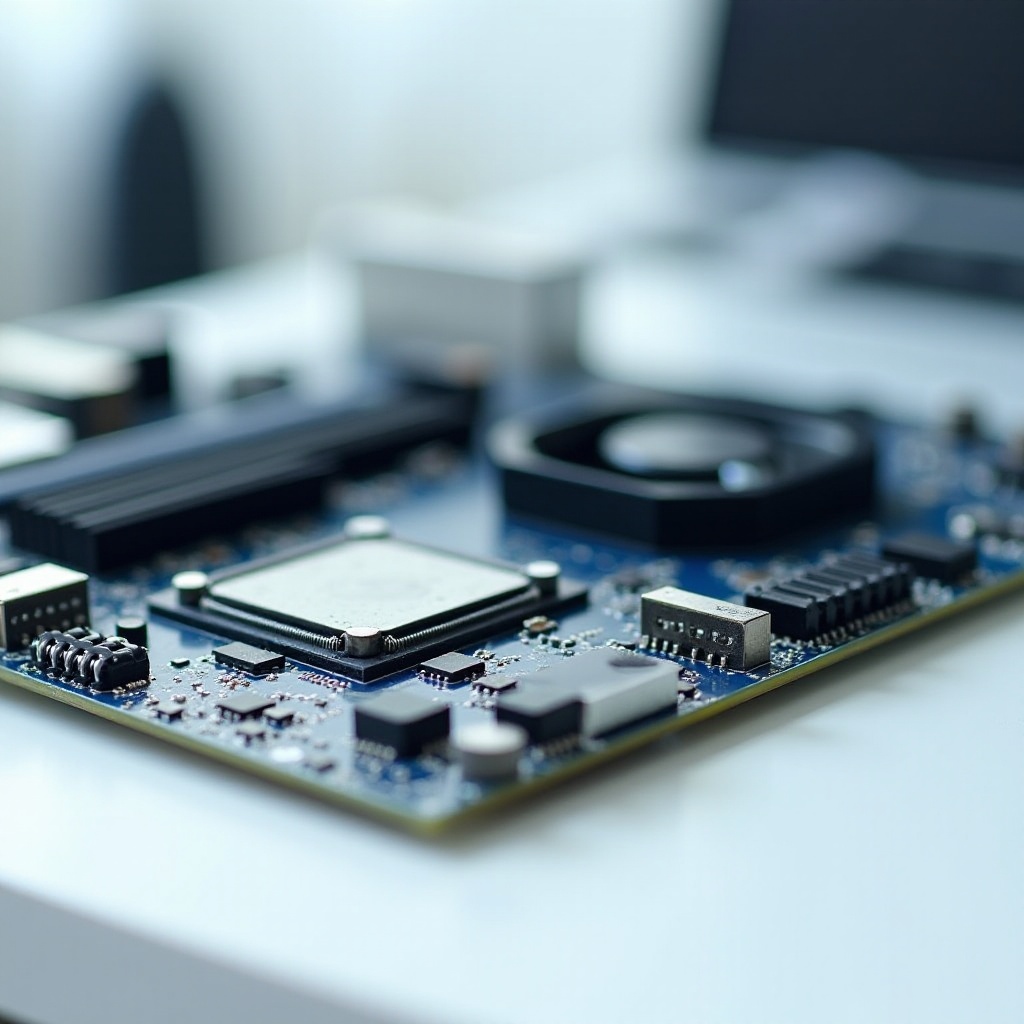Introduction
Encountering touchscreen issues on your Lenovo Yoga can be a source of frustration. Renowned for its responsive design and interactive capabilities, the Lenovo Yoga’s touchscreen occasionally faces problems that can hinder its performance. This guide is crafted to explore these challenges and offer straightforward, effective solutions. Whether you’re dealing with minor glitches or more severe issues, the following steps will assist you in maintaining a well-functioning touchscreen.

Common Causes of Touchscreen Issues on Lenovo Yoga
Touchscreens, while highly intuitive, rely on intricate hardware and software synergy. Several factors could lead your Lenovo Yoga’s touchscreen to malfunction. Often, outdated or corrupt drivers disrupt the touchscreen’s ability to register inputs effectively. Physical damage, from cracks to debris accumulation, can impede the device’s sensors and responsiveness. Additionally, certain software configurations or connectivity disturbances may interfere with the touchscreen’s functionality, manifesting as unresponsiveness or erratic behavior.
Preliminary Checks
Before delving into more complex solutions, conducting some basic checks frequently unveils the root of the issue.
-
Restart Your Device: Restarting can often clear up temporary glitches affecting performance.
-
Check for Windows Updates: Ensure that your Windows OS is current. Regular updates include fixes for known bugs that might be causing touchscreen issues.
-
Examine the Screen Surface: Thoroughly clean your screen to remove dust or residue that could interfere with its sensors.
Transitioning from these initial assessments, you can explore further steps to resolve persistent touchscreen issues effectively.
Software Troubleshooting Steps
Software issues frequently lie at the heart of touchscreen problems, and addressing these can restore functionality.
Ensure Your Device is Up-to-Date
Outdated software often triggers touchscreen disturbances. Follow these steps to ensure your device is updated:
- Open ‘Settings’ and navigate to ‘Update & Security’.
- Click ‘Check for updates’ and proceed to install available patches.
Keeping your system updated ensures that known bugs and issues have fixes installed, possibly resolving touchscreen problems.
Check the Touchscreen Drivers
Drivers act as intermediaries between hardware and operating systems. When drivers become outdated or corrupted, issues arise:
- Open ‘Device Manager’.
- Locate ‘Human Interface Devices’ and expand it.
- Right-click on ‘HID-compliant touch screen’ and select ‘Update driver’.
A prompt driver update might recover touchscreen responsiveness, especially if the driver was the source of the issue.
Recalibrate the Touchscreen
An inaccurate touchscreen may require recalibration to regain precision:
- Enter ‘Calibrate the screen for pen or touch input’ into your search bar.
- Follow the on-screen instructions carefully to complete the recalibration process.
Recalibration can fine-tune the touch response settings, enhancing accuracy and responsiveness.
Hardware Inspections and Solutions
When software troubleshooting falls short, a closer look at hardware may reveal the problem’s origin.
Inspect for Physical Damage
Physical harm to your device can translate to touchscreen problems. Follow these tips to assess damage:
- Power down your Lenovo Yoga and examine the screen under sufficient light.
- Detect any apparent damage such as cracks or abrasions that might be interfering with functionality.
Addressing physical damage often requires professional repair, especially if it’s extensive.
Clean the Touchscreen Surface
Accumulated grime and residue can severely affect touch sensitivity:
- Utilize a microfiber cloth for cleaning. Avoid harsh chemicals.
- Gently wipe the screen in circular motions to remove buildup without damaging the surface.
A clean screen enhances the efficiency of touch sensitivity, restoring optimal performance.
Check Device Connections
Loose hardware connections internally may cause touchscreen issues:
- Check edges and ports for obstructions or loose connections.
- Should issues persist, professional service might be necessary to verify and correct internal connection problems.
Ensuring secure connections within your device facilitates consistent touch functionality.
Advanced Solutions
When basic steps fail, implementing advanced solutions might solve the issue.
Perform a System Restore
A system restore can reset configurations causing touchscreen failures:
- Access ‘Control Panel’ and select ‘Recovery’.
- Choose ‘Open System Restore’ and follow the prompts to revert to a previous state.
This often remedies software-induced errors disrupting the touchscreen.
Try a Safe Boot
Safe boot mode can identify conflicts in software preventing proper touchscreen operation:
- Open ‘System Configuration’ by pressing Win + R and typing ‘msconfig’.
- Select ‘Safe boot’ under the ‘Boot’ tab, then restart to inspect touchscreen function.
This method isolates software issues, allowing you to pinpoint and rectify conflicting applications.
When to Seek Professional Help
Certain circumstances necessitate expert intervention. Persistent hardware damage or recurring software issues that resist resolution require professional analysis and repair. If initial measures fail to restore touchscreen functionality, consulting with a technician is advisable.

Preventive Measures to Avoid Future Issues
-Proper device care prolongs the lifespan and efficiency of your touchscreen.
- Regularly clean the touchscreen with appropriate materials.
- Stay prompt with software updates to ensure optimal system health.
- Avoid exposing your device to extreme temperature conditions to prevent hardware strain.
Proactive maintenance helps mitigate potential problems, ensuring consistent touch responsiveness.
Conclusion
With this comprehensive guide, fixing touchscreen issues on your Lenovo Yoga becomes straightforward. Utilize these strategies to address existing problems while implementing preventive measures to minimize future interference. Through a combination of routine self-maintenance and timely professional consultation, your device’s touchscreen will remain in peak working condition.

Frequently Asked Questions
How do I update the touchscreen driver on my Lenovo Yoga?
Navigate to ‘Device Manager’, expand ‘Human Interface Devices’, locate ‘HID-compliant touch screen’, and update the driver.
Can a screen protector affect touchscreen sensitivity?
Yes, screen protectors can sometimes inhibit touch sensitivity, especially if improperly applied or not designed for specific screens.
Is it possible to recalibrate the touchscreen settings manually?
Certainly, you can recalibrate through ‘Calibrate the screen for pen or touch input’ in your device’s settings. Follow the instructions provided.


